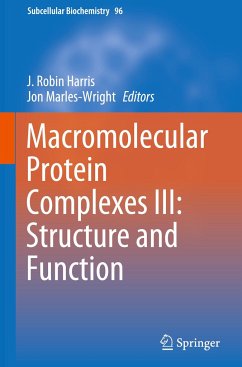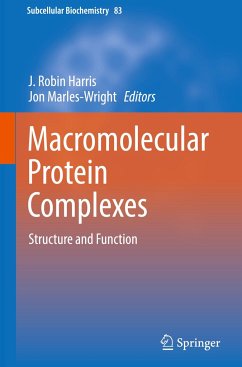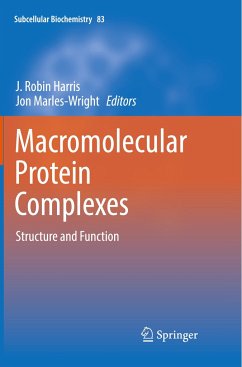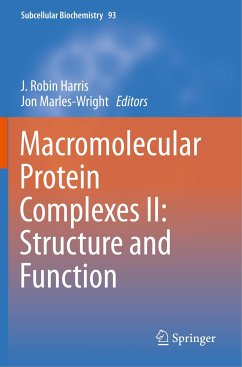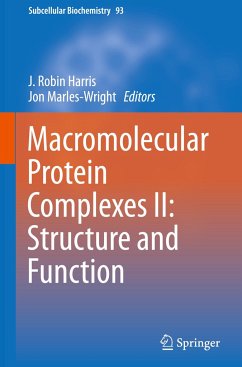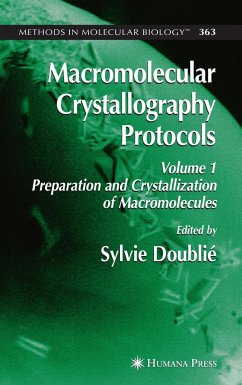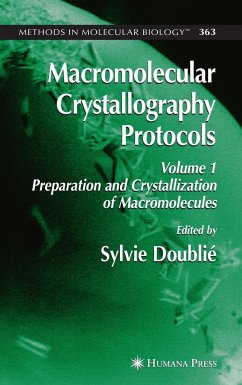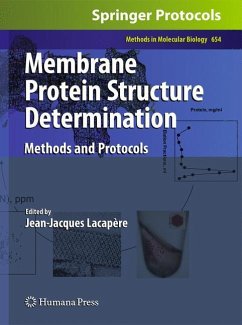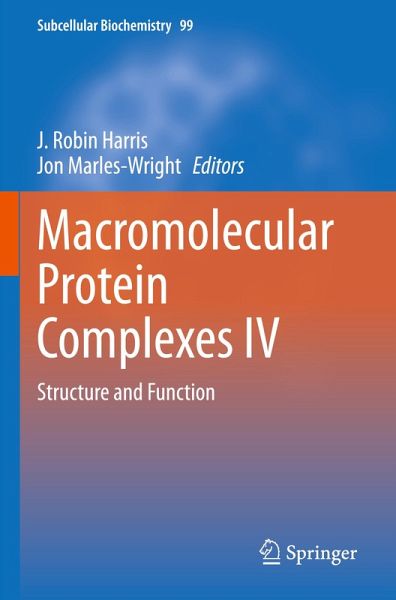
Macromolecular Protein Complexes IV
Structure and Function
Herausgegeben: Harris, J. Robin; Marles-Wright, Jon
Versandkostenfrei!
Versandfertig in 6-10 Tagen
76,99 €
inkl. MwSt.

PAYBACK Punkte
38 °P sammeln!
This book covers the latest findings of a wide variety of viral, prokaryotic and eukaryotic macromolecular protein complexes and builds upon the solid macromolecular foundations established by previous volumes of the Subcellular Biochemistry series. Thus, an almost encyclopaedic coverage of the broad field of protein complex structure and function has been established.The 17 interesting chapters included in this book have been organised into four sections: Soluble Protein Complexes, Membrane Protein Complexes, Fibrous Protein Complexes and Viral Protein Complexes. Significant topics present he...
This book covers the latest findings of a wide variety of viral, prokaryotic and eukaryotic macromolecular protein complexes and builds upon the solid macromolecular foundations established by previous volumes of the Subcellular Biochemistry series. Thus, an almost encyclopaedic coverage of the broad field of protein complex structure and function has been established.
The 17 interesting chapters included in this book have been organised into four sections: Soluble Protein Complexes, Membrane Protein Complexes, Fibrous Protein Complexes and Viral Protein Complexes. Significant topics present here are: Fatty Acid Synthase, the Fork Protection Complex, Ribonucleotide Reductase, the Kinetochore, G proteins, the FtsEX Complex, the Kainate Receptor, the Photosystem I-antenna, the Mycobacterial Arabinofuranosyltransferases, the the Bacterial Flagellum, the Actomyosin Complex, Motile Cilia, SLS Collagen Polymorphic Structures, and the Reovirus Capsid and Polymerase. Up-dates/expansion of chapter topics present in earlier volumes are now included in chapters here, e.g., those on Ferritin-like proteins and the Multi-tRNA Synthetase.
The book is richly illustrated throughout, the result of an impressive integration of structural data from X-ray crystallography and cryo-electron microscopy. The functional aspects of protein-protein interactions are also given a high priority.
The 17 interesting chapters included in this book have been organised into four sections: Soluble Protein Complexes, Membrane Protein Complexes, Fibrous Protein Complexes and Viral Protein Complexes. Significant topics present here are: Fatty Acid Synthase, the Fork Protection Complex, Ribonucleotide Reductase, the Kinetochore, G proteins, the FtsEX Complex, the Kainate Receptor, the Photosystem I-antenna, the Mycobacterial Arabinofuranosyltransferases, the the Bacterial Flagellum, the Actomyosin Complex, Motile Cilia, SLS Collagen Polymorphic Structures, and the Reovirus Capsid and Polymerase. Up-dates/expansion of chapter topics present in earlier volumes are now included in chapters here, e.g., those on Ferritin-like proteins and the Multi-tRNA Synthetase.
The book is richly illustrated throughout, the result of an impressive integration of structural data from X-ray crystallography and cryo-electron microscopy. The functional aspects of protein-protein interactions are also given a high priority.







